Día de los Muertos honors the dead. Here's how people in Arizona help keep the holiday alive
In recent years, Día de los Muertos has exploded in popularity in the U.S. as more and more people adopt the celebration in their traditions.
For many, Disney's 2017 animated film “Coco” was their introduction to the celebration. The film illustrates the traditions of the fictional town of Santa Cecilia and how that community honors the dead.
The act of honoring the dead is a long-standing tradition that originated long before Mexico became a nation-state. Día de los Muertos has deep historical roots dating back more than 3,000 years to Indigenous groups in the region and, over time, evolved, with influences from Europe, Africa and Catholic teachings.
One of the common beliefs is that on the Day of the Dead, spirits of the deceased return to the world of the living to be with loved ones. It is a time for honoring and remembering loved ones, commemorating the departed and celebrating life.
Common elements that go into the Día de los Muertos celebration can include ofrendas or altars, calaveras de azúcar or sugar skulls, face painting, cempasúchil or marigolds and pan de muerto. Most of these practices take time, love and effort to prepare.
Arizona families and businesses with generational ties to the celebration devote hours, days and even weeks into making Día de los Muertos possible for others. These are their stories.
Ofrendas: 'A portal for spirits to come back'
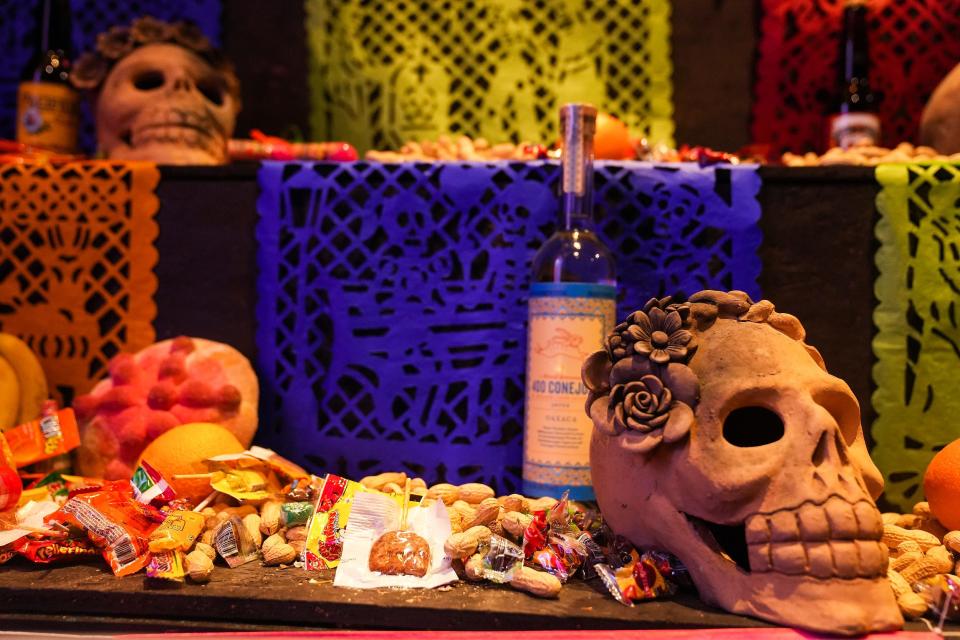
The altar, or ofrenda, is the centerpiece for how the dead are honored during the festivities for Día de los Muertos, and every ofrenda is different.
Their elaboration is passed on from generation to generation, made up of framed images of loved ones, their favorite foods and drinks, and adorned in candles and cempasúchil.
These components are described as "ritual technology" by Dr. Mathew Sandoval, an associate teaching professor at Barrett the Honors College at Arizona State University who researches the tradition of Día de los Muertos.
“It's not just an object,” Sandoval said. “It's supposed to be a portal for spirits to come back from.”
Good for the soul: Dia de los Muertos: Why 'this holiday is medicine' and how you can celebrate respectfully
The act of building the ofrenda is a tradition that Sandoval identifies as cultural medicine, allowing people to heal from loss.
“In revisiting a person's death year after year, annually as part of a cultural tradition, it really does heal (the) wound (that) comes from losing those you love,” Sandoval said. It's something he's learned from his work, but also from his own experience in honoring his father.
“The first altar that I ever created was for my pops after he committed suicide,” he said. “In making that altar, it allowed me to get some sense of healing.”
The celebration has evolved, fusing with the teachings of the Catholic Church in postcolonial Mexico and acclimating to American cultural norms as it becomes more and more popularized in the U.S. And while many have criticized this, Sandoval noted that “transformation and adaptation are what ensure any tradition’s survival," in a recent publication.
However, even with the changes Día de los Muertos has endured, the act of building an altar and honoring the deceased is always an involved and emotional event.
Sandoval recently became a father, which means that he will be in charge of passing down the traditions that he holds dear as both a scholar and as a gift of his heritage.
“I'm going to ensure that the Día de los Muertos is a significant part of this girl's life, even though she is only going to be a quarter Mexican,” he said as he laughed.
Calaveras: A collective celebration of life and death
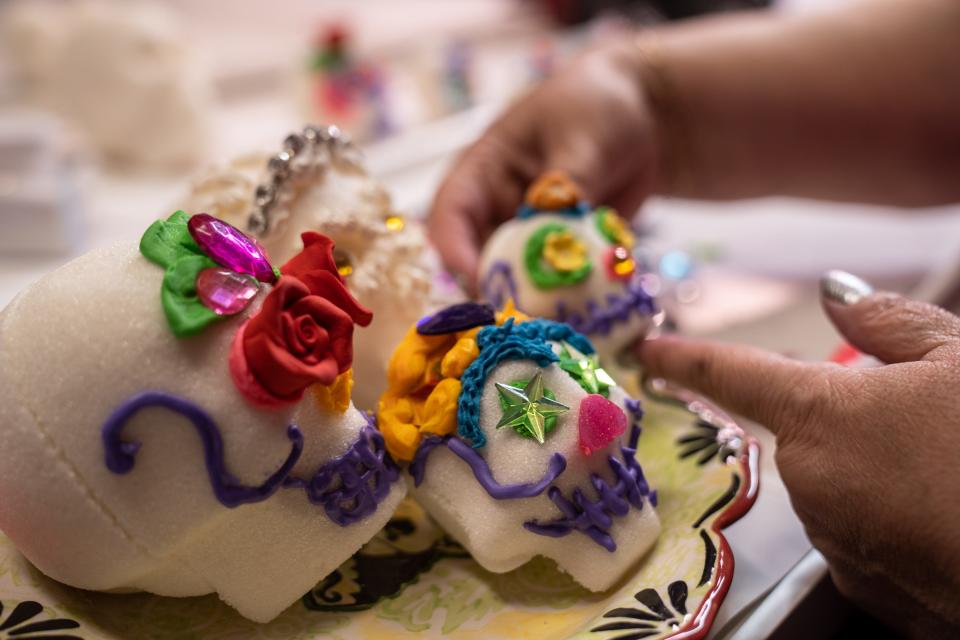
Calaveras, or sugar skulls, are a part of Día de los Muertos because they represent a departed loved one.
In their most traditional form, calaveras should have the name of a loved one written on them and decorated in bright colors and then placed on ofrendas.
“It’s a very important part of Día de los Muertos because it represents the souls of the departed,” said Kathy Cano-Murillo, a local artisan dedicated to keeping Mexican traditions alive through crafting. “That little skull, it represents the sweetness of life. The skull part of it represents that the body is gone but the soul will live forever. It's celebrating the cycle of life.”
A former Arizona Republic columnist, Cano-Murillo is a third-generation Mexican with family from the border state of Sonora and the central state of Zacatecas.
A Phoenix native and resident, she has used her blog Crafty Chica since 2001 to bring Latino centric crafts to mainstream audiences.
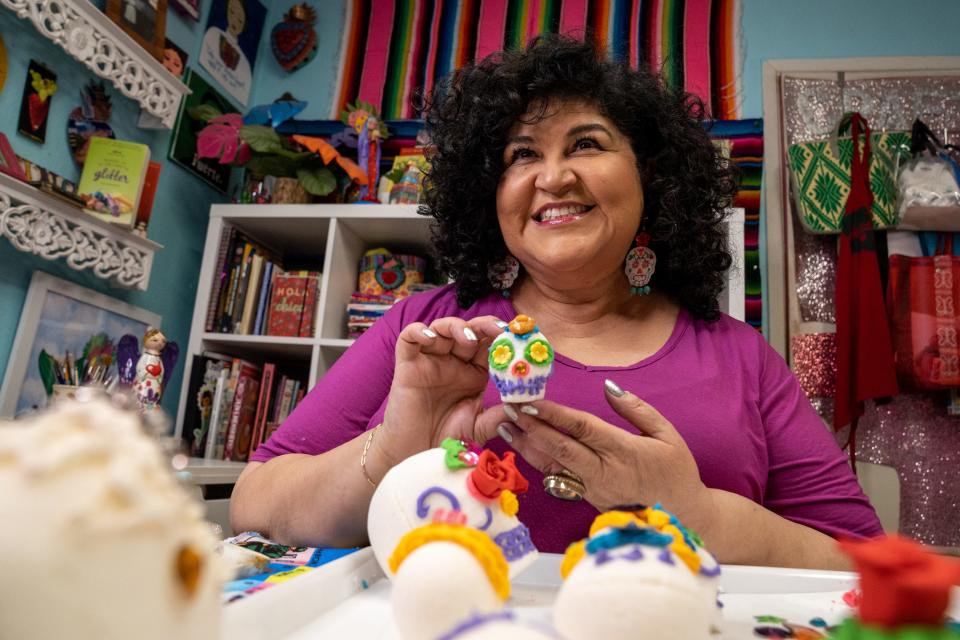
She started making sugar skulls as a way to appreciate Día de los Muertos and acknowledge the collective human journey from life to death. For her, building an ofrenda to her ancestors and loved ones is a tradition that comes from the heart.
A common practice is to buy premade blank calaveras and decorate them at home, or even use decorated ones and place them directly onto the ofrenda.
But Cano-Murillo likes to keep things old school, taking about 24 hours to make them using meringue powder, sugar and water. She waits for them to dry before using the brightest and most representative colors to decorate them and make them stand out.
Growing up, her family did not celebrate the Day of the Dead. But she proudly began once she married. It’s been about 33 years that they’ve been celebrating it and watching it grow in Phoenix.
“As I'm making (the sugar skulls), I am thinking of them, just putting energy there to connect me to them and it feels really good," Cano-Murillo said. "It makes me realize that everything is temporary, we're all on the same journey but just on different timelines, and I know I have that in common with my ancestors and someday I'll reconnect with them."
Cempasúchil: 'There is no technology that can substitute us'
The aroma of the first batch of cempasúchil of the season filled the air, clouding the smell of hundreds of other flowers with its unique, musky scent at Yosi’s Flower Shop, off 12th Avenue on Tucson’s southside.
To Leticía Domínguez Murillo, six-year owner of the shop, cempasúchil is “like a pompom. Orange. It almost resembles a carnation,” she said, pausing before admitting she was unsure how to describe it.
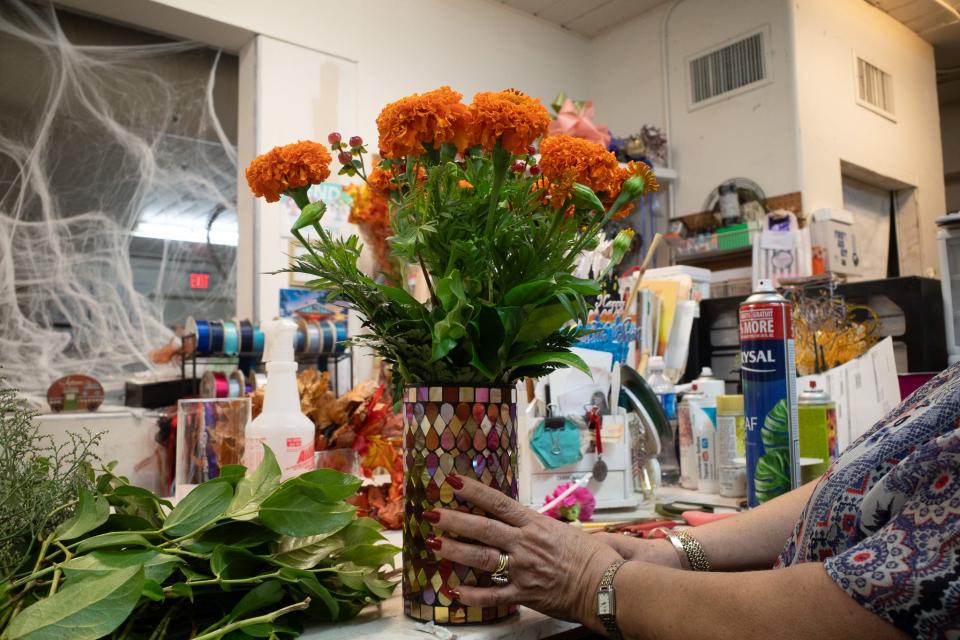
One of the women helping create cempasúchil arrangements at Yosi’s, María Elena Palacios, blurted out “¡jediondo!” as the room broke into laughter. They all agreed — the flower carries a rather peculiar smell.
But Palacios has become well acquainted with it, having worked 40 or so years in the flower arrangement business.
Her job is to get the cempasúchil ready, an intensive process that begins as soon as the flowers arrive. This year’s batch came from Ecuador — some of them had bloomed already and others would require care as they were still just buds.
The use of the flower during Día de los Muertos is rooted in the belief that cempasúchil petals lead spirits back to reunite with their loved ones in the land of the living.
Tradition is at the center of the work these women do, and everything is done by hand. Domínguez Murillo was inspired by seeing her mother and grandmother prepare their own flowers and decorations in the town of Huatabampo, Sonora.
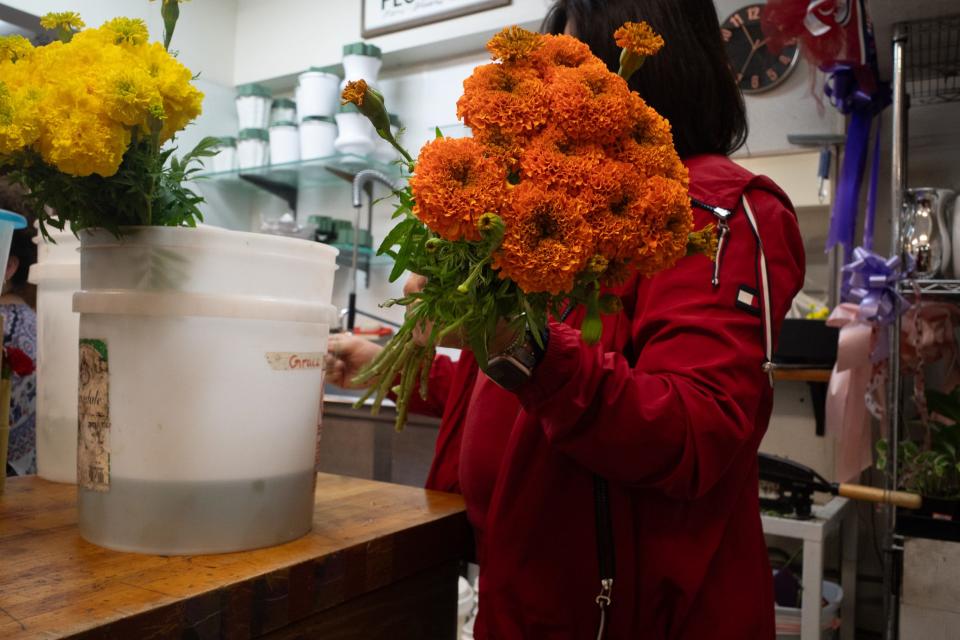
Growing up, Domínguez Murillo and her family would go to their local cemetery where their loved ones were buried. Favorite foods and drinks of the deceased would be brought along, as the family sat, enjoying each other's company while a live band would play their favorite songs. And of course, there was plenty of cempasúchil.
Yosi’s Flower Shop expects to sell approximately 100 flowers this season, but with big-box retailers adopting the popularized celebration, small, Latino-owned shops often struggle.
Nevertheless, they remain optimistic about the future of their work.
“This is a manual labor job,” Palacios said. “There are computers that help make designs and such, but there is no technology that can substitute us — thank God,” she said as she laughed.
Pan de muerto: A connection made through food
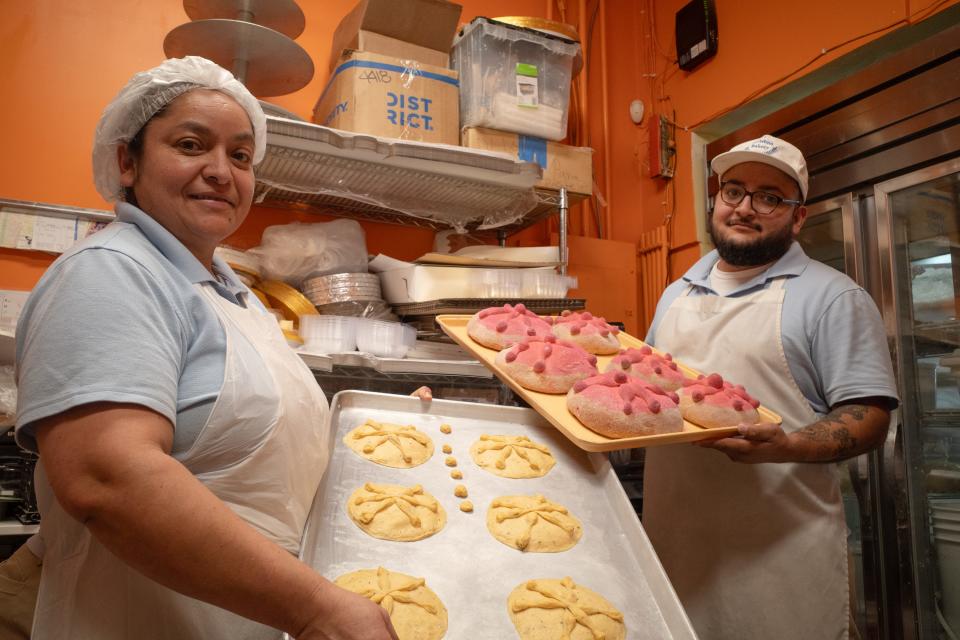
La Purisima Bakery is an institution in the West Valley.
Its Glendale location has existed in various iterations for more than 40 years, serving fresh Mexican bread and now taking up a big chunk of Glendale Avenue just west of 43rd Avenue.
Inside, workers in white uniforms knead dough, mix ingredients and decorate bread, including pan de muerto, which literally translates into bread of the dead.
Pan de muerto is a traditional bread used in ofrendas as an offering for deceased loved ones.
Irma Arellano, general manager at La Purisima Bakery, was born and raised in the south-central state of Morelos, Mexico, where her grandparents used to make this bread using adobe ovens. The bread was made into unique shapes like dolls and bunnies, and were made both savory and sweet using sesame seeds or sugar.
“They call it pan de muerto, but it’s really for the living because we’re the ones that eat it,” Arellano said.
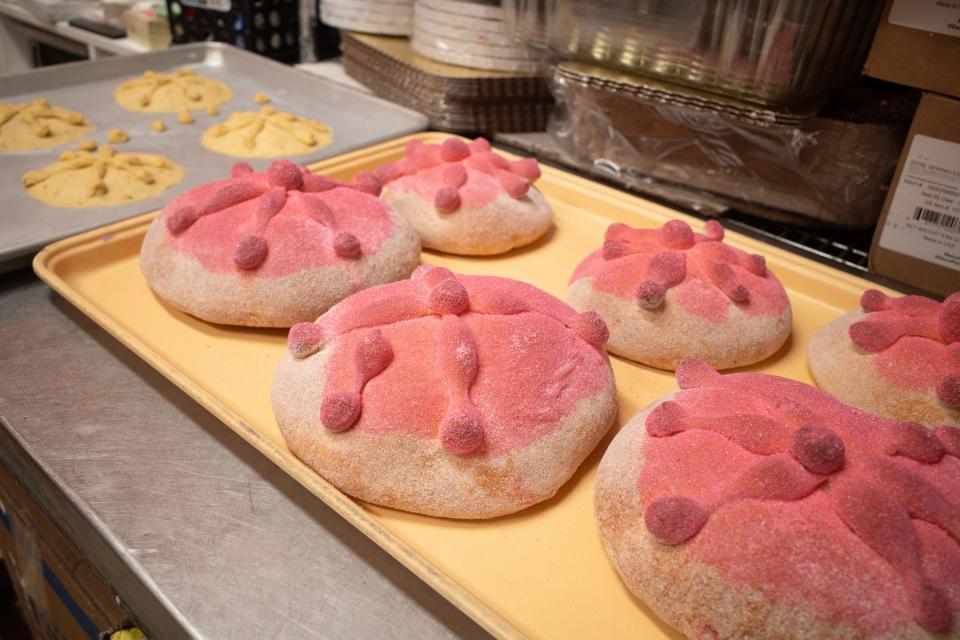
The bread was taken to a cemetery where she and her family would spend the night of Nov. 1. The very next day, they would eat the pan de muerto. Nothing is wasted, she said.
Making pan de muerto reminds Arellano of her ancestors and what they used to do.
“My grandfather, he used to do it. He had one of those ovens that he made with rocks and clay,” Arellano said. “We would only make bread once a year, maybe twice a year.”
At La Purisima, the 24-hour, pan de muerto-making process starts at night by mixing the dough, letting it rest, kneading it and then molding it into its circular form. The bone-like shapes on the top are made between the baker's fingers while the circles are rolled by hand.
The pan de muerto style they make is a custom in the western state of Michoacan, Mexico. That's where the owner, who is also Arellano’s father-in-law, is from.
The bread is made as early as September, weeks before Día de los Muertos celebrations. The larger loaf sells for $9, whereas the smaller one costs $5.
Arellano has seen the demand for pan de muerto gradually increase in the 30 years she's been working at the bakery, attributing the rise in celebration of Día de los Muertos to films like 20th Century Fox's 2014 “Book of Life” and Disney's "Coco."
Calaca makeup: Embracing death as a journey
Second to the ofrenda — and in some instances, possibly even more popular — is the tradition of painting one's face to resemble a calaca, meaning Mexican skeleton.
Embracing the calaca or The Catrina — regarded as the lady of the afterlife in Mexican tradition — represents the idea that death is a normal part of life and should be celebrated. Those who don the face paint often dress in traditional Mexican attire during Día de los Muertos celebrations.
That's what Noemi Ayala-Antonsen has witnessed over the years as the owner of A Sweet Party, a party rental and decorating service based in Avondale. She began face painting in 2003, when calaca makeup wasn't as commercialized as it is now.
Every year since, she gets an influx of requests around Día de los Muertos, including face painting for the Desert Botanical Garden yearly festivities and other private events.
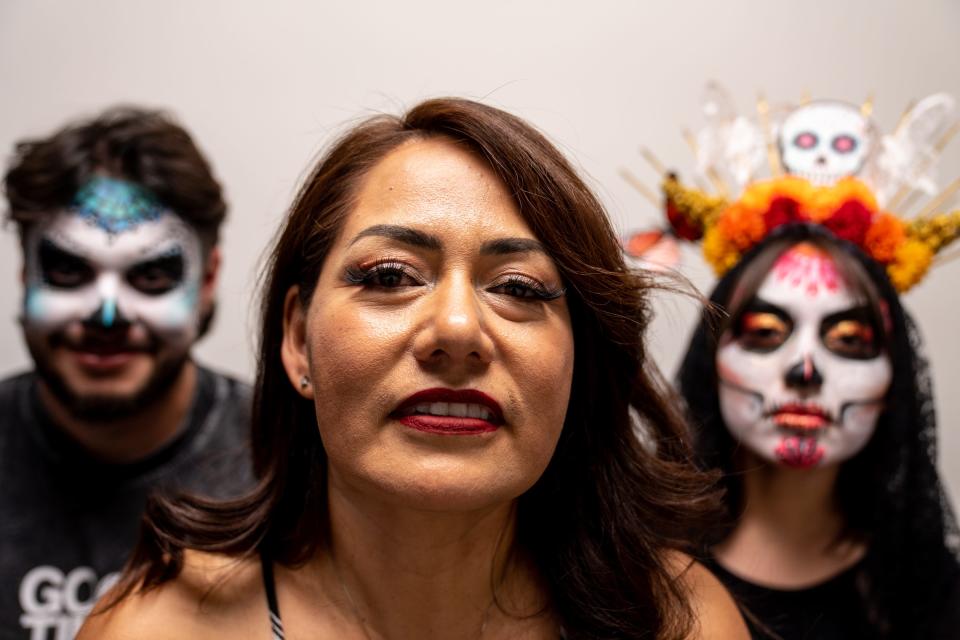
Face painting is something she typically does freehand as she incorporates monarch butterflies, spiderwebs, sugar skulls, marigolds, gems and other flowers into her designs.
Monarch butterflies are special to Mexico because their arrival in the country coincides with Día de los Muertos. In the states of Michoacán and Mexico, the return of monarchs symbolizes the souls of ancestors returning for the celebration, according to The Monarch Joint Venture.
Born in Mexico City and raised in Guadalajara, Ayala-Antonsen grew up celebrating Day of the Dead with dishes her grandma used to cook, including mole and rice and chicken, a big pot of tamales, piloncillo and pan de muerto. Her family would place photos of her great-great-grandparents and ancestors she never met at the ofrenda.
As a Valley resident, she brings that celebration into her home through face painting, hoping her kids pass that tradition down.
What’s therapeutic art for her is also a way to educate people about Mexican culture and the honoring of deceased loved ones through colorful and elaborate displays.
Over the years, she's painted thousands of faces, she said.
Have a question you need answered? Reach the reporter at rromeroruiz@gannett.com. Follow him on X, formerly Twitter: @raphaeldelag.
Reach the reporter at dina.kaur@arizonarepublic.com. Follow @dina_kaur on X, formerly known as Twitter.
Support local journalism. Subscribe to azcentral.com today.
This article originally appeared on Arizona Republic: How people in Arizona keep Día de los Muertos traditions alive

